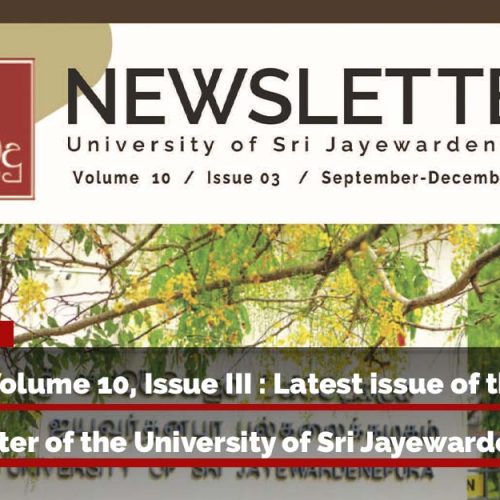
Poverty as a Global Phenomenon
Poverty is a complex and multidimensional social phenomenon. It is widespread and includes a broad, worldwide population, from children to the elderly, and not excluding ethnic minorities. Poverty has been one of the biggest and most challenging problems and obstacles to human development, not only for under-developed or developing countries (Asia, Africa, Central and South America), but also for wealthier economies, the developed world. The poor have always existed, and they exist today, not only in our countries or regions, but globally. Hence, fighting poverty has become a global theme. It is the mission of the World Bank which is carved in stone at its Washington Headquarters: “Our Dream is a World Free of Poverty.” This mission underpins the World Bank’s analytical, operational, and convening work in more than 145 client countries, and is bolstered by the goals of ending extreme poverty within a generation and promoting shared prosperity in a sustainable manner across the globe.
According to the World Bank, globally, there has been marked progress on reducing poverty over the past decades. The world attained the first Millennium Development Goal target—to cut the 1990 poverty rate in half by 2015—five years ahead of schedule, in 2010. Despite the progress made in reducing poverty, the number of people living in extreme poverty globally remains unacceptably high. Also, given global growth forecasts, poverty reduction may not be fast enough to reach the target of ending extreme poverty by 2030.
- According to the most recent estimates, in 2013, 10.7 percent of the world’s population lived on less than US$1.90 a day, compared to 12.4 percent in 2012. That’s down from 35 percent in 1990.
- Nearly 1.1 billion people have moved out of extreme poverty since 1990. In 2013, 767 million people lived on less than $1.90 a day, down from 1.85 billion in 1990.
While poverty rates have declined in all regions, progress has been uneven:
- The reduction in extreme poverty between 2012 and 2013 was mainly driven by East Asia and Pacific (71 million fewer poor) –notably China and Indonesia—and South Asia (37 million fewer poor) –notably India.
- Half of the extreme poor live in Sub-Saharan Africa. The number of poor in the region fell only by 4 million with 389 million people living on less than US$1.90 a day in 2013, more than all the other regions combined.
- A vast majority of the global poor live in rural areas and are poorly educated, mostly employed in the agricultural sector, and over half are under 18 years of age.
The work to end extreme poverty is far from over, and a number of challenges remain. It is becoming even more difficult to reach those remaining in extreme poverty, who often live in fragile contexts and remote areas. Access to good schools, healthcare, electricity, safe water and other critical services remains elusive for many people, often determined by socioeconomic status, gender, ethnicity, and geography. Moreover, for those who have been able to move out of poverty, progress is often temporary: economic shocks, food insecurity and climate change threaten to rob them of their hard-won gains and force them back into poverty. Globally, it will be critical to find ways to tackle these issues as we make progress toward 2030.
Figure 01: Share of Population Living under Poverty (Living on Less than $1.90aDay), 2013

Source: The World Bank, 2017
Poverty in a Regional Context
Despite rapid economic growth faced and the poverty alleviation measures undertaken all over the world, certain regions remain to suffer from poverty more than the others. Especially in the Sub-Saharan Africa and the South Asia, the poverty headcount ratio remains high and this may jeopardize the future growth in these countries. Being more specific on the numbers, the number of people living under $3.2 a day in Sub-Saharan Africa amounts to 66.5% while South Asia is not too far away from that, at 52%. (Figure 02). East Asia on the other hand has positive results on the poverty alleviation initiatives which they have undertaken throughout the past and partly their rapid infrastructure development and the industrialization over the past decades, have contributed greatly for this achievement.
It is to be noted that within regions too there are many disparities and differences among the nations in terms of the poverty situation. Hence, the regional statistics may not be always representative of all the nations belonging to that region. Not only within the regions, but also within certain nations, there may be huge variations among the states. Therefore, at the end of the day, poverty analysis and the snapshot varies from one context to another.
Figure 02: Poverty Headcount Ratio by the Regions, 2013

Source: The World Bank, 2017
As we analyse GDP per capita in few of the selected countries in Asia, it a clear observation that the East Asian countries top the list. For instance, Singapore, Japan Hong Kong and South Korea record a per capita GDP greater than US $ 25,000 million (Table 01). These East Asian Economies have achieved the high income earning status, and to do so they all went through a rigorous development process and structural changes within their economies. These high GDP per capita measures on the other hand have helped them to curb down the poverty levels within their economies.
Table 01: GDP per Capita (Constant 2010 US$ Millions)

Source: The World Bank, 2017
When considering South Asia, ithosts nearly one-fifth of the world’s population and is home to the largest number of people living below the poverty line in the world. With this large population, South Asia has been struggling with the issue of poverty for a very long period of time. Poverty reduction and income distribution in developing countries became vital policy issues in the 1990’s and since then many programmes have been undertaken at regional as well as national level to alleviate poverty in South Asia.
Economic growth rate in South Asia has been high and is increasing. It rose from 5.7% to 6.6% annually on a tri-annual average. The GNI per capita increased from US$ 447 to 1,422 during 2000-12. Poverty alleviation depends on economic growth in aggregate and other country-specific factors. Incidence of poverty in the region has been reduced remarkably on the basis of international purchasing power parity (PPP) of US$ 1.25 per capita daily as well as national poverty lines (NPLs). It declined from 45.1 to 33.0 percent of population in 1999-2010 and may go down to about 15% by 2020.
Figure 03:Poverty Head Count Ratio for South Asia

Source: The World Bank, 2017
Poverty headcount data of South Asian countries are depicted in Figure 03. According to this figure it is clear that Sri Lanka has the lowest poverty head count ratio amongst all of them. The poverty head count ratio measured according to the $1.90 a day (PPP) is recorded at as low as 1.9% in 2012 for Sri Lanka. On the other hand, Bangladesh and India suffers from relatively high poverty head count ratios in the region.
Further, it could be noticed that, although poverty as a proportion to the population has fallen in the region during the past two decades, still there are a significant number of people living below poverty line. Even at present South Asia has been the second fastest growing region in the world, it faces major challenges in its efforts to reduce poverty.
Figure 04:Income Inequalities in South Asia

Source: The World Bank, 2017
Figure 04 indicates the income inequalities prevailing within the South Asian economies. All the South Asian countries seem to have a relatively high income inequality. In almost all of these countries around 40% of the income is enjoyed by the richest 20% and the poorest 20% enjoy less than 10% of the total income. Hence, it is clear that although Sri Lanka displayed a low poverty head count ratio, the country seems to be suffering from income inequality. Thus, it is clear that although in terms of Poverty head count ratio South Asia looks better now, in terms of inequality it has much more to be addressed.
Poverty in the Sri Lankan Context
Poverty in Sri Lanka is measured by the Department of Census and Statistics, which is estimated by the headcount index (proportion of the poor population out of the total population), poverty gap index, and poor household percentage (the percentage of poor households out ofthe total number of households) using census data and the Household Income and Expenditure Survey (HIES) data. The HIES is conducted once in three years. The latest wasin 2016. Currently, the Department of Census and Statistics uses the official poverty line which was established in 2004 to measure poverty. It was Rs.4166 in 2016. According to the HIES, poverty has declined in the last decade. It has declined from 26.1 percent in 1990 to 4.1 percent in 2016. This significant improvement of poverty alleviation is due to various poverty alleviation programs conducted in Sri Lanka during last decade.
Table 02: Poverty Headcount Index in Sri Lanka

However, still there are significant disparities across sectors, provinces and districts. Poverty is high in the estate sector and low in the urban sector. However, poverty level in all these sectors are declining (Figure 05).
Figure 05: Poverty by Sectors in Sri Lanka

Source: The Centre for Poverty Analysis (CEPA), 2017
On the other hand, poverty is highest in the Northern Province and lowest in the Western Province. Figure 06 shows the spatial distribution of poverty level across provinces.
Figure 06:Spatial Distribution of Poverty in Sri Lanka

Source: Department of Census and Statistics, Sri Lanka, 2016
- Western Province records the lowest poverty rate (1.7) while the Northern Province represent the highest (7.7). Colombo District records the lowest poverty rate while Kilinochchi District records the highest poverty rate.
- However, these disparities should be carefully interpreted. Highest poverty rate does not mean higher number of poor people. Most of the geographical areas with higher poverty rates are less populated and have less number of poor people. Hence, it is necessary to discuss whether the poverty alleviation policies should target the areas with high poverty rates or larger number of poor people.
Disparities in the poverty level can be observed across the Divisional SecretariatDivisions (DSDs). However, progress in poverty alleviation can be identified in the past decade. A considerable progress in poverty alleviation can be identified in Kalpitiya, Mundel, Vanathawilluwa in Pullalam District and Minipe and Udadumbara in Kandy District. In these areas poverty headcount rate has decreased by more than 37 percent. However, still Moneragala district remained severely poor level.
Figure 07:Distribution of Poverty Headcount Index by DSDs – 2002 and 2012/13

Source: Department of Census and Statistics, Sri Lanka, 2016
With the decline of poverty headcount ratio progress can be identified through indicators of social development. Sharp decline in infant mortality rate shows the social development of the country during past decades (Figure 08).
Figure 08:Infant Mortality Rate in Sri Lanka

Source: The World Bank, 2017 and Registrar General’s Office Sri Lanka
As a result of improvement in the poverty alleviation, increased literacy rate and improvement of the health care facilities, a significant improvement in the life expectancy of the people can be observed throughout the past decades. (Figure 09).
Figure 09: Life Expectancy at Birth (Years) in Sri Lanka

Sri Lanka has embarked on a journey; “Vision 2025: a country enriched”, in line with that the government commits to enable economic growth while protecting the most vulnerable populations that live in this nation. Therefore, the government has laid special emphasis on establishing a well-integrated and an efficient social protection system. Furthermore, regional economic development is considered as one of the top priorities of the development process, which would ensure a reduction in income disparities.
On a regional context, the BIMSTEC itself has formulated The Poverty Plan of Action, which provides detailed strategies and priorities for overcoming challenges associated with Poverty. Accelerated pro-poor and inclusive growth, social development, good governance and increased preparedness to address adverse effects of climate change are some of the key strategies within this plan. However, it all boils down to the extent of implementation that each country follows in the years to come.
Conclusion
Poverty as a whole is in the declining trend all over the world, however it is still a major concern for many states. The rapid development taking place in some of the Asian nations; especially in China and India gives even bigger hopes for the region in overcoming poverty. While East Asia has been successful in alleviating poverty to a greater extent, South Asia is slowly getting on to the correct path. Considering the Sri Lankan context, although the poverty measures create a positive image, there is a lot to be done when it comes to income inequality. The Vision 2025; A country enriched has a promising strategy for reducing these gaps in income. The present development process which is centered in Colombo, will then be focused on the regional areas, trickling down the benefits to the most vulnerable sections in society.
References
1. Centre for Poverty Analysis (CEPA), 2017
2. The Registrar General’s Department of Sri Lanka, 2017
3. The World Development Indicators, The World Bank, 2017
4. Poverty Indicators, Department of Census and Statistics, Sri Lanka, 2016

Prof. Sampath Amaratunge
Vice Chancellor of the University of Sri Jayewardenepura
Read more:
http://www.statistics.gov.lk/page.asp?page=Poverty
http://www.statistics.gov.lk/poverty/HIES-2012-13-News%20Brief.pdf










